
premier League, December 5 2021
Fred (77)
Ralf Rangnick's reign at Manchester United began with a victory over Crystal Palace at Old Trafford secured by Fred's second-half goal. Adopting a new-look 4-2-2-2 formation and applying an intense press, they demonstrated the first signs of how the new-look United can be expected to perform.
"I am very happy with the way the team performed, especially the first half hour, with the pressing – it was exceptional," said Rangnick, United's interim manager. "The way we defended, we had control of the whole game. The clean sheet was the most important part. These are the things we must improve. We need to keep clean sheets. With just the one training session, I was really impressed. We did much better than expected." His opposite number, Patrick Vieira, said: ""I'm disappointed – we gave them a tough game, we made it really difficult for them. We need to change our mindset. How can we be more ruthless when we're in the opposition's box?"
 12752201725391810713175638239151120
1275220172539181071317563823915112019/3
SHOTS / ON TARGET
7/2
59%
POSSESSION
41%
29
ATTACKS INTO AREA
9
1.43
EXPECTED GOALS (XG)
0.62
In possession: Manchester United
The 4-2-2-2 formation
After mostly lining up in a 4-2-3-1 shape under Ole Gunnar Solskjaer and Michael Carrick, Manchester United were organised by Ralf Rangnick into a 4-2-2-2 formation in possession. Their attacking width was provided by the full-backs, while the double pivot supported and provided cover behind Bruno Fernandes and Jadon Sancho – who operated as number 10s initially looking to attack through the inside channels (below). The front two of Cristiano Ronaldo and Marcus Rashford attacked the spaces between between full-back and central defender, or looked to withdraw to link play into Fernandes and Sancho. United first progressed possession around Crystal Palace's 4-4-2 defensive block and through the wide areas, before working it back infield once they had advanced beyond Palace's wide midfielders.

Attacking with a lopsided shape
The hosts' threat forced Palace's midfield deeper, which reduced the spaces between the lines and made it harder for United to access their four most advanced players. They therefore positioned both number 10s on one side of the pitch – usually the left – so that they could again combine and create around compact opponents. Alex Telles continued to overlap from left-back, while Sancho and Fernandes linked in an attempt to feed Ronaldo or Rashford. That also created space for one of their defensive midfielders to advance into areas beyond the Palace central midfielders (below).
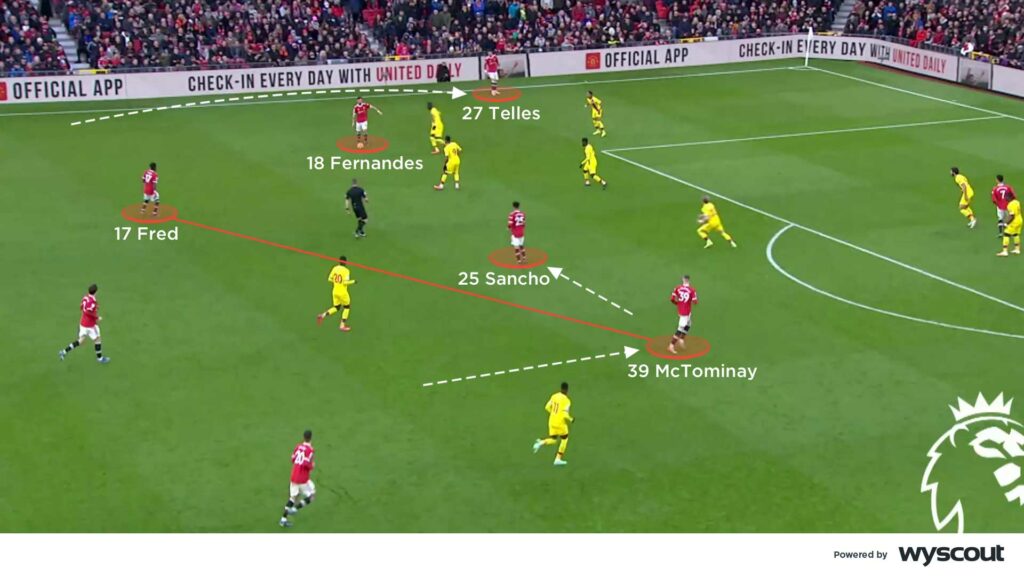
Underusing Ronaldo and Rashford
Wide runs by Fernandes and Sancho were particularly effective at stretching Palace – not least when one of their full-backs had moved to press their opposite number and a central defender had to follow one of the United number 10s (below). The spaces created between Palace's two central defenders offered significant potential, but United struggled to work possession back infield quickly or effectively enough to exploit them. As a result, the front two were too often underused.
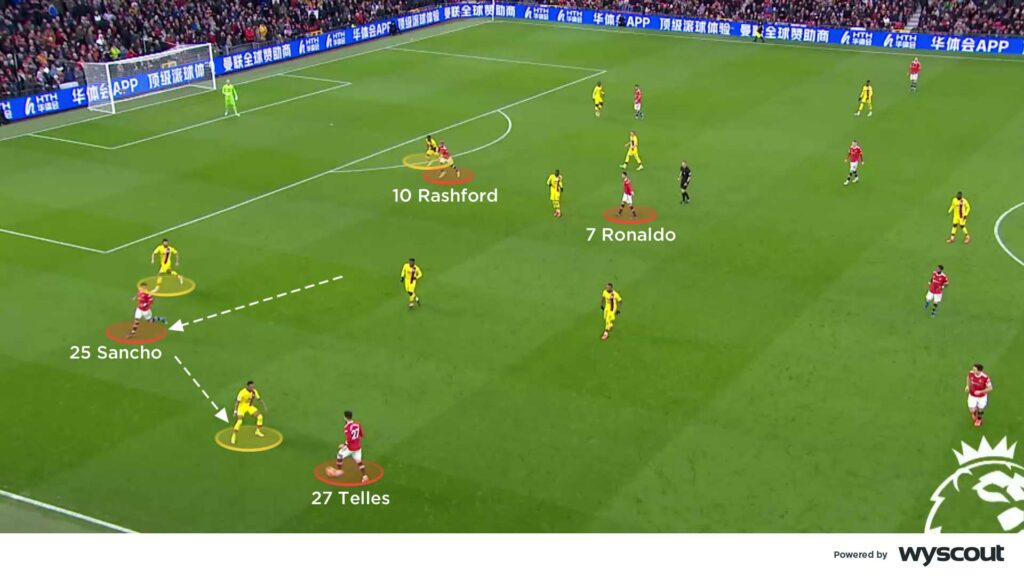
Accommodating Greenwood
Mason Greenwood played as the right-sided number 10 after being introduced for Sancho just past the hour, with Fernandes on the left – and both attacked from more advanced starting positions (below). Dalot and Telles also attacked further forward, and ultimately closer to Rashford and Ronaldo, where they occupied their opposite numbers at an earlier stage of their attacks. Despite the Palace midfield narrowing out of possession, Fernandes and Greenwood still attacked and looked to combine infield. It was Greenwood's touch to Fred that created the game's only goal.
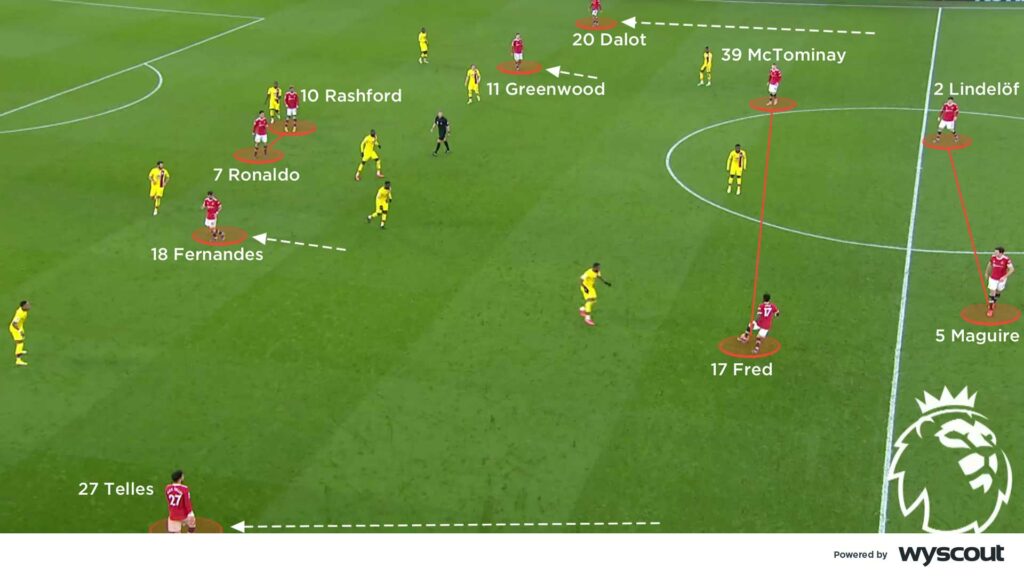
In possession: Crystal Palace
Struggling against United's intense press...
Manchester United worked with aggression to force possession wide from their high-pressing 4-2-2-2 shape. The number 10s looked to affect the Palace full-backs, who were forced wide and too often unable to find their teammates in central midfield. Similarly, the Palace centre-backs were pressed by the United front two, and struggled to find passes into midfield. As Palace instead tried to build possession wide (below), Scott McTominay and Fred covered Conor Gallagher and Jeffrey Schlupp. The United full-backs could then deal with the Palace wide forwards.

... and changing shape
As Palace attempted to build through midfield, Conor Gallagher withdrew from his initially advanced starting position to form a double pivot alongside Cheikhou Kouyaté. With the visitors shifting from a 4-3-3 shape into more of a 4-2-3-1, Jeffrey Schlupp moved infield to operate as a number 10 (below). United continued to apply the same press, with their full-backs jumping to press Palace full-backs Tyrick Mitchell and Nathaniel Clyne. That left wide attackers Jordan Ayew and Wilfried Zaha free to drop and link with their midfield before spinning to take advantage of the space left in behind the United full-backs.
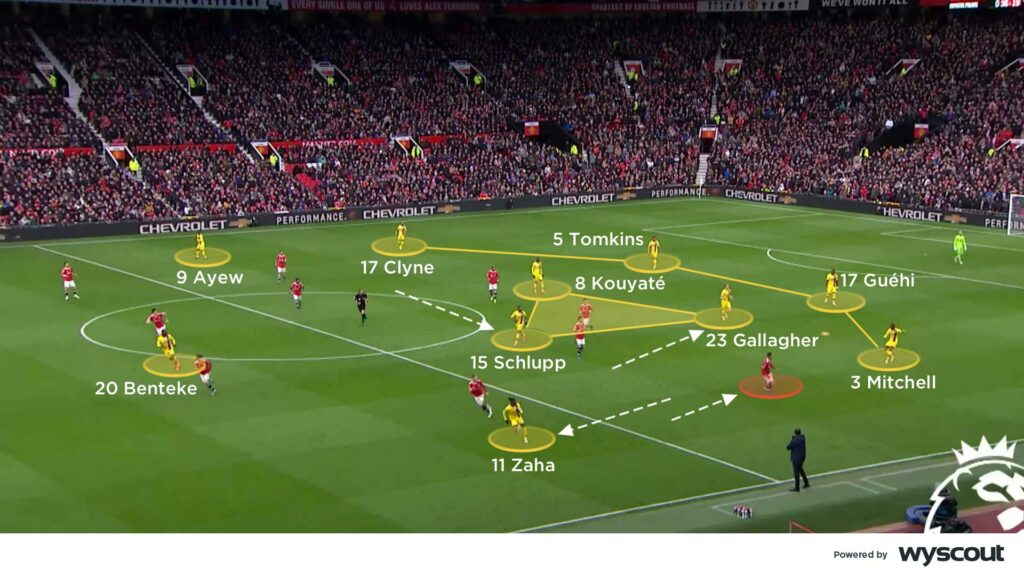
Attacking infield...
When United's defensive midfielders pressed Palace's full-backs, Zaha moved infield to receive away from Diogo Dalot, and Christian Benteke looked to attack the spaces between the United centre-backs. This helped to create space between the lines, where Schlupp could receive in relative freedom (below). Both Gallagher and Kouyaté moved towards the ball, while Mitchell looked to advance and overlap around Zaha.
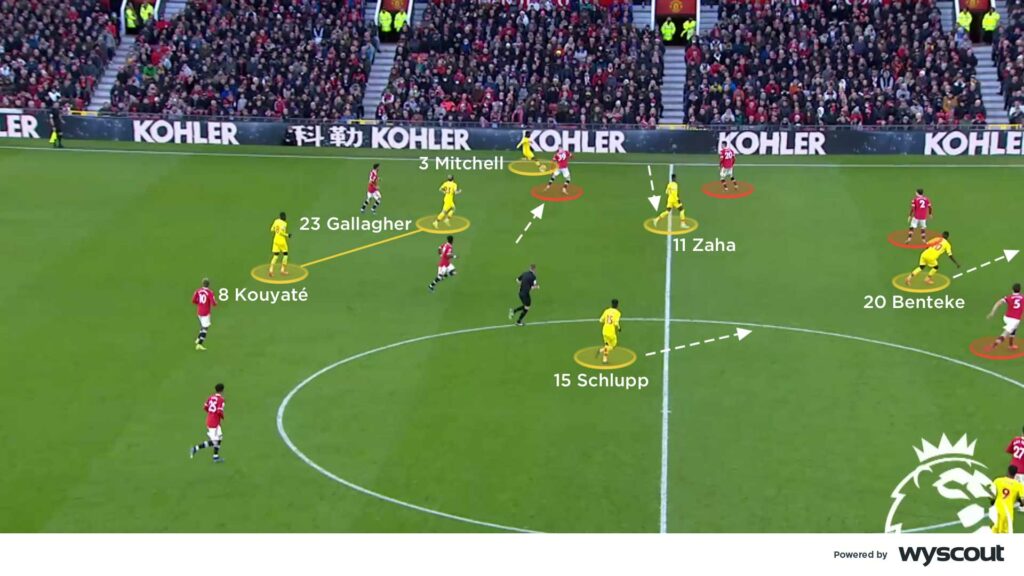
... but retaining width on the right
When Palace directed attacks down their right, Schlupp drifted wider, between Clyne and Ayew. With Clyne now looking to overlap, Ayew could attack the space between Harry Maguire and Alex Telles on the left side of the United defence. Palace's front three were well positioned to attack United's back four, and were well supported by Gallagher and Kouyaté throughout the second half, but they were ultimately unable to find the breakthrough and left Old Trafford with nothing.
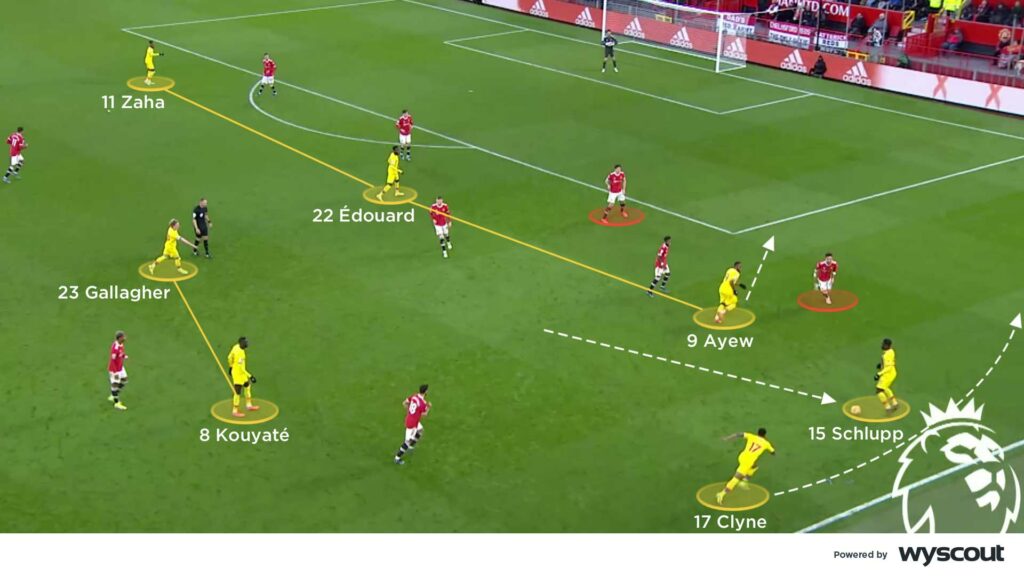
To learn more from the professional coaches of The Coaches’ Voice, visit CV Academy



